About ticks
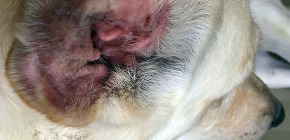
The ear mite is a dangerous parasite that often affects dogs, cats, rabbits and other domestic animals and causes a disease called otodectesis (otherwise, ear scabies). A dog can pick up from ticks anywhere: walking in a park, a public garden, in the yard of a house. The disease develops rapidly and is characterized by pain and severe itching in the ears, which are accompanied by abundant secretion from the auditory passages of a viscous brown mass, literally teeming with parasites and their eggs and capable of leading to infection of other pets. If you do not start treatment in time, the disease can lead to complete deafness and even death of the animal ...
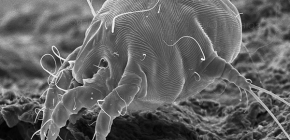
Ear mites are widespread parasites of domestic and wild animals. For humans, in general, they are not very dangerous, although cases of parasitizing of the tick Otodectes cynotis and in humans have been reported.If the disease is started, then purulent otites develop - there is suppuration in the inner ear, which often leads to the spread of inflammation and its transition to meningitis. Next, we will talk more about the interesting features of the biology of ear mites and effective methods of dealing with these parasites ...
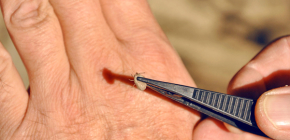
When a person finds on the body of a sucked tick, the question immediately becomes urgent whether the parasite is infected with tick-borne encephalitis virus or not. The following actions also depend on whether the tick is encephalitic: for example, whether it is necessary to donate blood for antibodies to an infection and whether it is necessary to carry out emergency prophylaxis of CE by injecting immunoglobulin. We can go on and talk about whether an encephalitic tick can be distinguished from a non-infected tick without putting a parasite for analysis ...
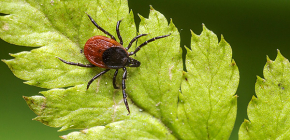
The dog tick (Ixodes ricinus) is one of the most widespread and widespread representatives of the group of Ixodes. Like all other species of this group, it is a dangerous parasite that feeds on the blood of more than 100 species of animals.Among his hosts, an important role is played by humans and domestic animals, therefore the name “dog” does not reflect the parasite's food preferences in any way ...
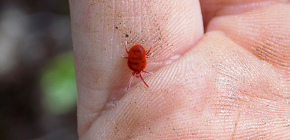
Red-mite mites - a relatively little-known extensive family of arthropods. Adult babies are free-living predators that live in the soil and do not pose a danger to humans, but their larvae are active parasites that can, including, feed on the blood of humans and domestic animals. Redhead bites are painful and usually massive. Such contacts are also dangerous due to the fact that these red ticks are carriers of tsutsugamushi fever pathogens, a serious natural focal disease caused by rickettsia ...

Ticks that are carriers of dangerous diseases can be found far not only in wild forests, but also very close to human habitation - in city parks, small groves, in a country house or a vegetable garden. About where exactly ticks live in different locations, whether they are able to jump from trees and how to minimize the likelihood of contact with them, we'll talk further ...
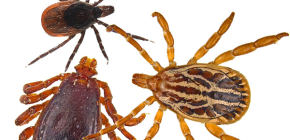
Today, for the average person, the word “tick” is associated primarily with ixodic ticks. And this is not surprising - ixodides are best known (albeit sadly) among their fellows for the deadly danger they can pose to humans. After all, just ixodic ticks are carriers of tick-borne encephalitis, which still poses a threat to the lives of millions of people. In addition, in general, this group of parasites is very specific and interesting for many unique features of its biology ...
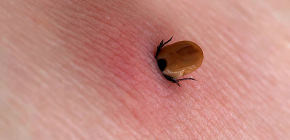
Removing the sucked mite from the skin is a fairly simple procedure that can be carried out in just a minute directly in nature. However, it is often carried out with certain errors that are fraught with an increased risk of infection with tick-borne infections or the consequences of suppuration of the skin. Let's see how you can quickly and safely remove a tick from the skin and do without complicated manipulations ...
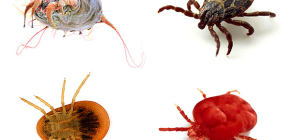
Many people do not even know how many tens and even hundreds of tick species literally live side by side with us and affect not only our health, but also our economic activity.And Ixodes ticks (which are commonly referred to as forest people), the diversity of these creatures is not limited. Dust mites that live in almost every home, itching, causing scabies, acne iron plants that by 50 years have infected almost all people on the planet, spider mites, imperceptibly breeding on houseplants, as well as in gardens and kitchen gardens - these creatures are, in fact, omnipresent ...

Practice shows that not only children, but also many adults have very superficial ideas about ticks and the dangers associated with their bites. And when it comes to removing the parasite from the skin, the most interesting thing begins: someone tries unsuccessfully to choke a tick with a drop of oil, someone sucks it with a cut syringe, and some even set it on fire in the hope that it will disappear from the pain itself. Next, we consider the most topical issues related to the danger of ticks for humans - this information can be useful, including for conducting classes in preschool and school, as well as for the manufacture of information boards ...
Basic information about different types of ticks ...
